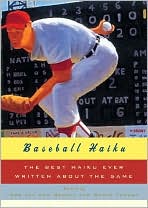
My fascination with the wrecks of the Great Lakes dates back to the first time I heard Gordon Lightfoot's "Wreck of the Edmund Fitzgerald", an incredibly popular ballad from the 1970s. Over time I read about many of the ships that sank in the lakes and found the stories tragic, heroic, mysterious and always deeply interesting. In his recent title, author Ed Butts does an excellent job of capturing some of the more intriguing accidents on the lakes, dating back to the Speedy which sank in 1804. In succeeding chapters he documents other ships like the Lady Elgin, the Waubuno, the Bannockburn and, of course, the Edmund Fitzgerald. But he also goes past that to write about "creatures of the abyss" and "Bessie" the beast of Lake Erie. (Every lake has a beast it seems.) (Lake Erie, incidentally, covers 9,940 square miles - which is nearly impossible for me to wrap my head around. It is also the shallowest lake.) (Now you are ready for Lake Erie trivia!)
Shipwrecks, Monsters and Mysteries of the Great Lakes has plenty of trivia, like the depth of the Lake Erie, but for such a slim volume (80 pages), it offers a lot more than just that. The design is stellar, with short informative chapters, plenty of black and white pictures (or illustrations) of the ships and a variety of ancillary information (like what happened to sister ships or the histories of nearby towns or lighthouses) is provided in brief highlighted text boxes giving readers a little bit extra.





 How important are cultural roots to personal self-worth? In
How important are cultural roots to personal self-worth? In 



 It's almost playoff season, so today, I'm talking about baseball - specifically, I'm talking about a book that's a few years old now, Baseball Haiku: The Best Haiku Ever Written About the Game, edited by Cor van den Heuvel and Nanae Tamura.
It's almost playoff season, so today, I'm talking about baseball - specifically, I'm talking about a book that's a few years old now, Baseball Haiku: The Best Haiku Ever Written About the Game, edited by Cor van den Heuvel and Nanae Tamura.



